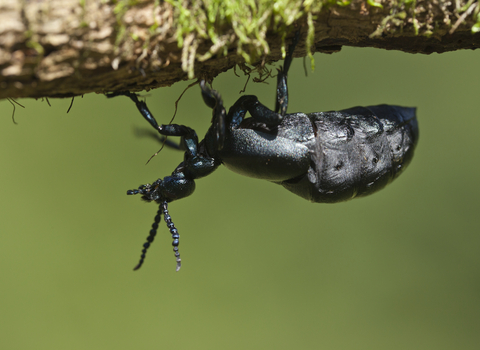Did you know that there are 4,000 beetle species in the UK? You are probably familiar with the humble ladybird, an iconic beetle of children's books and one we welcome to our gardens. Have you ever wondered why these beetles are so important to have in your garden?
The ladybird beetle is recognisable, but there are just over 40 species of ladybird in the UK. The familiar species are the 2-spot ladybird and the slightly larger 7 spot ladybird. Whilst the 14-spot ladybird is bright yellow with up to 14 rectangular black spots on the wing cases; these spots are variable in shape and may become fused to create a chequered pattern. It can be distinguished from the smaller, but similar, 22-spot ladybird by its more rectangular, merging spots.
The 14-spot ladybird is a medium-sized ladybird found in a wide variety of habitats, particularly grassland, woodland edges, towns and gardens. It has a long hibernation period, emerging as late as May to breed. The lifecycle of a ladybird consists of four phases: the egg; the larval stage, during which the larva undergoes a series of moults; the pupa, in which the larva develops into an adult; and the adult phase, during which the female lays eggs in batches of up to 40.
Ladybirds are the alternative aphid killer, a natural predator hunting aphids on your garden plants. Both adults and larvae feed on aphids, making them a friend in the garden.
Other beetles that are visiting your garden are ground beetles, these are voracious predators of soil dwelling invertebrates including slugs, aphids and ants. Again, a useful insect to have in your outdoor space. No need to use pesticides when you have natural bio control. As a result of their biological control, agricultural systems encourage the use of beetle banks.
Beetle banks can vary in size, shape, and height but the important feature of them is they are a mound of soil covered in grass. The beetle bank provides over wintering habitat for a variety of other insects that then go and feed on pest species like aphids in the summer. In farming systems, the beetle banks can be 100s of meters long and therefore act as valuable habitat for ground nesting birds such as skylarks.


